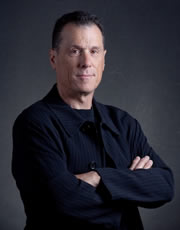 In the aftermath of the attacks in Paris, I began to ponder how such global catastrophes influence the way we think about art. It occurs to me that movements in art have, since the earliest days of Modernism, reacted to such crises with manifestos, objects, ephemera and performances that were conceived and carried out in the crucible of war. Only today I was speaking to my class about the legacies of World War I, World War II, Vietnam and the wars in Iraq and Afghanistan as catalysts for artists to engage in social commentary and critique. When we look at work in the context of the social and historical milieu out of which it comes, we can imagine what the artist may have been looking at while conceiving and making such work; what she may have been critiquing or commenting on via the work and what her intentionality may have been in sending that work out into the public where it can become a part of a larger discourse.
In the aftermath of the attacks in Paris, I began to ponder how such global catastrophes influence the way we think about art. It occurs to me that movements in art have, since the earliest days of Modernism, reacted to such crises with manifestos, objects, ephemera and performances that were conceived and carried out in the crucible of war. Only today I was speaking to my class about the legacies of World War I, World War II, Vietnam and the wars in Iraq and Afghanistan as catalysts for artists to engage in social commentary and critique. When we look at work in the context of the social and historical milieu out of which it comes, we can imagine what the artist may have been looking at while conceiving and making such work; what she may have been critiquing or commenting on via the work and what her intentionality may have been in sending that work out into the public where it can become a part of a larger discourse.
To make art in the face of genocide or oppression or other epic cultural events, whose aftermath produces grief at a global scale, seems an insignificant gesture. What is the point? How can something so small and personal speak back to the horrors of mass killing, of genocide and the chaos that ensues, especially in the contemporary era, one in which terrible news seems to cover us like a scratchy woolen blanket?
As we hear comparisons made between the relative value of welding and the value of philosophy in the political sphere (both of course have culturally worthwhile attributes) I think particularly about the philosopher Theodor Adorno, arguably one of the most important philosophers and social critics of the twentieth century.
Adorno’s critical writing takes as one its projects a dialectic focused on the catastrophic impact of twentieth-century history and its negative effect on both imagining and achieving a world that is concerned, at its core, with humanity for all people. In particular I think of (and often cite) Adorno’s 1949 essay, Cultural Criticism and Society, wherein he states, “To write poetry after Auschwitz is barbaric.”
One of the challenges facing philosophers is how to find historically and culturally appropriate ways to speak about truth and suffering and to derive meaning from such trauma. In this fragment of a larger statement, Adorno questions the role of creative undertakings in the face of unbearable violence. What difference can it possibly make to write a poem after the horrors of World War II?
While the events that took place in Paris over the weekend were not of the scale that Adorno was reacting to, they are nonetheless, seen in their own context, equally traumatic to those who were touched by the violence. So, again we ask the question,
How can art respond to such grief?
As the central character in Samuel Beckett’s The Unnamable (1954) states as the play comes to a close,
You must go on.
I can’t go on.
I’ll go on.
Best,
Douglas Rosenberg
Chair, Art Department
